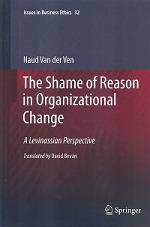 Is it inappropriate to speak of ‘the Judeo-Christian tradition’? One can hear that phrase more often nowadays, especially from the side of Dutch populist politicians. But at the same time other people protest against that combination of words, so it is not that obvious to make the connection.
Is it inappropriate to speak of ‘the Judeo-Christian tradition’? One can hear that phrase more often nowadays, especially from the side of Dutch populist politicians. But at the same time other people protest against that combination of words, so it is not that obvious to make the connection.The protest is quite understandable for who knows a bit about the history of Christian crusades, pogroms and discrimination against Jews. But I thought that phrase also to have something nice, because if after so many centuries two traditions discover their commonalities, isn’t that laudable?
But since last week I tend to find it a bit more inappropriate than before to use the combination ‘Judeo-Christian’ as a matter of course. That’s because someone who in earnest can not be suspected of wanting to enlarge gaps, held a lecture and made clear how wishful the phrase may be, while the endorsement by historical facts is completely absent.
The speaker was the renowned art historian Gary Schwartz, and he made his point by a closer look at the romantic image of ‘Rembrandt the Jews Friend’. He described the creation of that image - actually a myth - in the nineteenth century.
In France this was done by attributing to Rembrandt, in line with the French republican tradition, a kind of socially progressive character. This could be derived, according to the myth, from the unconventional artistry and humanity with which he painted his many portraits. In Germany, at the end of the nineteenth century, Julius Langbehn presented the painter as spiritually congenial with the Jews. Rembrandt’s affinity with the Jews would mainly lie in his love for the earthly and popular character of the Jewish tradition, not its intellectual aspects, which Langbehn did not like at all.
It seems that the core of the affinity between Rembrandt and the Jews in the twentieth century is sought in the combination of earthly simplicity, earnest and resignment to fate which is imputed to both parties. In that vein H.W. Janson in his standard work History of Art from 1962 writes that Rembrandt had a special sympathy for the Jews “as the heirs of the biblical past and as the patient victims of persecution”.
Schwartz told that when he went to study, the image of Rembrandt as humane friend of the Jews was almost unquestioned. And that maybe that image played a role in his choice for the study of the history of art. But paradoxically, precisely Schwartz was one of the first to have occasion to question the myth.
The turnaround for Schwartz came when he considered in more detail some of Rembrandt’s paintings, such as the Christ portraits and the Hundred Guilder Print. In the latter (see figure) a striking feature is that the immediate entourage of Jesus is portrayed as a bit more Dutch than the jawing bystanders in the periphery. Besides Schwartz points to a copy of that picture with an anti-Jewish poem written by Rembrandt’s friend Hendrik Waterloos. Schwartz thought: yes, that’s the way Christians view Jews, in the 17th century probably in a no less ambiguous way then in the 20th century. And there is little reason to believe that Rembrandt thought much different about Jews than his friends did.
The idea remains attractive: to believe that Rembrandt had much interest and affection for the Amsterdam Jews. And more generally: that Judeo-Christian is an integrated combination. But caution remains necessary.
Also see Rembrandt's Heads

